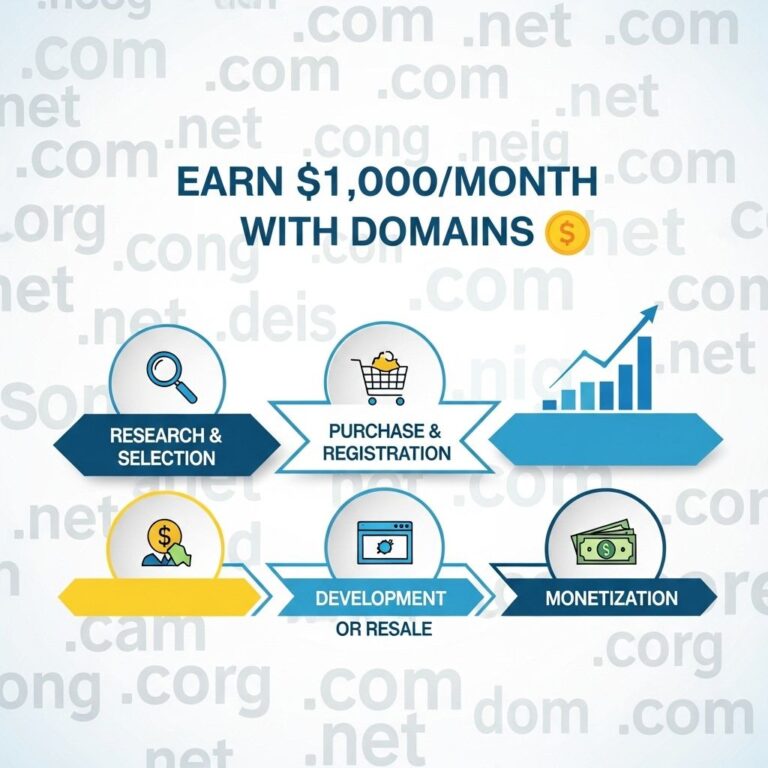In the ever-evolving world of web design and development, selling themes has emerged as a lucrative avenue for designers and developers alike. With a plethora of platforms available for theme distribution, the potential to earn a steady income stream is within reach. By understanding the nuances of theme creation, marketing strategies, and customer engagement, one can realistically aim to earn $2,500 a month or more. This article will guide you through the essential steps to achieve that goal.
Table of Contents
Understanding the Theme Market
The first step in your journey to earning money through theme sales is to understand the market landscape. The demand for themes can vary significantly based on factors such as design trends, the platform you choose, and your target audience.
Key Platforms for Selling Themes
- WordPress: The most popular CMS, powering over 40% of the web. Themes can be sold on marketplaces like ThemeForest or directly on your website.
- Shopify: Ideal for e-commerce themes. The Shopify Themes Store is a great place to reach online store owners.
- Joomla and Drupal: Other CMS options that have dedicated user bases looking for custom themes.
- Static Site Generators: Platforms like Gatsby and Hugo are gaining popularity and have niches that are often underserved.
Creating Your Theme
Once you’ve identified your target market and platform, the next step is to create a theme that stands out. Here are some aspects to consider:
Design Principles
- Responsive Design: Ensure your theme is mobile-friendly, as more users access the web through mobile devices.
- SEO Optimized: Incorporate best practices for search engine optimization to help your theme rank well.
- User Experience: Prioritize usability and navigation to enhance user engagement.
Development Tools
Utilizing the right tools can streamline your development process:
- Frameworks: Bootstrap or Tailwind CSS can help you build a responsive design more efficiently.
- Version Control: Use Git for version control to manage changes and collaborate if you’re working with a team.
- Testing Tools: Use tools like BrowserStack to ensure compatibility across different browsers and devices.
Marketing Your Themes
Creating a great theme is just the beginning; effective marketing will determine your success. Here are some strategies to consider:
Building an Online Presence
Focus on these key areas:
- Website: Create a professional website showcasing your themes, testimonials, and support.
- Content Marketing: Start a blog to share tips, tutorials, and updates about your themes.
- Social Media: Utilize platforms like Instagram, Twitter, and LinkedIn to engage with potential customers.
Leveraging Online Marketplaces
Listing your themes on popular marketplaces can provide immediate access to a wider audience:
- ThemeForest: One of the largest marketplaces for themes, offering great visibility.
- Creative Market: A platform that focuses on graphic design and stock assets, including themes.
- Mojo Marketplace: A marketplace that caters to a variety of platforms.
Engaging with Customers
Building a relationship with your customers can lead to repeat sales and referrals:
Support and Maintenance
Offering excellent customer support can set you apart:
- Provide documentation and FAQs to help customers troubleshoot common issues.
- Offer timely assistance through email and live chat options.
- Regularly update your themes to ensure compatibility with the latest platform versions.
Gathering Feedback
Feedback is essential for improvement:
- Encourage customers to leave reviews and suggestions.
- Use surveys to gather insights on what features users value most.
Maximizing Your Income
Once you’ve established your theme business, consider these strategies to boost your income:
Upselling and Cross-Selling
Offer add-ons, premium support, or additional features at an extra cost:
- Plugins: If you’re selling a WordPress theme, consider creating related plugins for added functionality.
- Customization Services: Provide customization packages for customers who want a unique touch.
Subscription Models
Consider offering a subscription-based model for ongoing themes and updates:
- Charge a monthly or yearly fee for access to new themes and updates.
- Provide exclusive content or features to subscribers to increase value.
Scaling Your Theme Business
As you reach your income goals, think about scaling your business:
Hiring a Team
Consider hiring additional designers and developers to expand your offerings:
- Freelancers can help with theme customization or support tasks.
- Invest in a marketing specialist to boost your online visibility.
Expanding Your Product Line
Don’t limit yourself to just themes:
- Create templates for email marketing or landing pages.
- Develop graphics and stock images to supplement your offerings.
Conclusion
While selling themes can be a profitable venture, success requires dedication, skill, and a keen understanding of market dynamics. By following the outlined strategies and continuously engaging with your audience, you can build a sustainable business that generates $2,500 or more each month. Embrace the journey, learn from both successes and failures, and remain adaptable to the changing landscape of web design.
FAQ
How can I start selling themes online?
To start selling themes online, you should first identify your niche, create high-quality themes, set up an online store or use a marketplace like ThemeForest, and promote your products through social media and SEO.
What are the best platforms to sell themes?
Some of the best platforms to sell themes include ThemeForest, Creative Market, WordPress.org, Shopify, and your own website.
How do I price my themes competitively?
To price your themes competitively, research similar products in your niche, consider the complexity and features of your themes, and take into account the target audience’s budget.
What marketing strategies work best for selling themes?
Effective marketing strategies for selling themes include content marketing, social media promotion, email marketing, and leveraging SEO to drive organic traffic to your sales page.
How can I ensure customer satisfaction with my themes?
To ensure customer satisfaction, provide thorough documentation, offer excellent customer support, regularly update your themes, and actively seek feedback for improvements.









